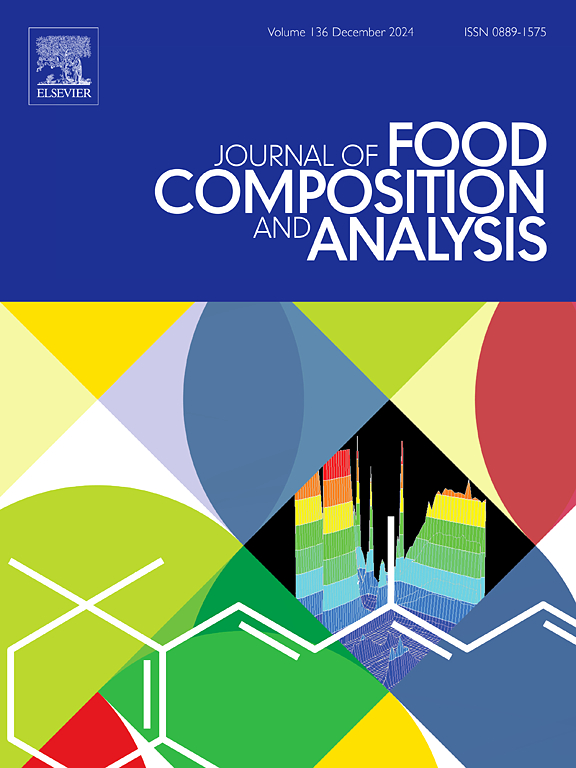Exploring cholesterol presence in Allium cepa and Allium fistulosum L using LC-APCI-MS/MS
IF 4
2区 农林科学
Q2 CHEMISTRY, APPLIED
引用次数: 0
Abstract
A limited number of studies have shown the presence of trace amounts of cholesterol in plants. However, due to the extremely low concentrations and structural similarities between cholesterol and other compounds including phytosterols and lathosterol, advanced analytical techniques are crucial for improving the detection reliability. This study investigated cholesterol presence in four species within the same Allium genus: onion (Allium cepa), spring onion (Allium fistulosum L.), garlic (Allium sativum), and chives (Allium tuberosum Rottl.) using GC-MS and LC-APCI-MS/MS. Cholesterol was quantified only in onions and spring onions at concentrations of 23.4 and 7.3 mg/100 g dry weight. The MS spectrum showed that fragmentation occurred at the A-ring steroid in the cholesterol-TMS derivatives, producing abundant ions at m/z 129 and 329. Ions at m/z 368 and 353 were also created from the fragmentation of TMSO and methyl groups. LC-APCI-MS/MS generated precursor ions [M+H–H2O]+ , which fragmented at the C-ring, resulting in major ions at m/z 161 and 147, while m/z 257 was the least abundant ion produced from two fragmentations at the C-ring and side chain.
采用LC-APCI-MS/MS技术研究大蒜和细茎葱中胆固醇的含量
数量有限的研究表明植物中存在微量的胆固醇。然而,由于胆固醇与其他化合物(包括植物甾醇和植物甾醇)的浓度极低且结构相似,先进的分析技术对于提高检测可靠性至关重要。采用气相色谱-质谱联用和lc - apci -质谱联用技术对洋葱(Allium cepa)、小葱(Allium fistulosum L.)、大蒜(Allium sativum)和韭菜(Allium tuberosum Rottl.)四种葱属植物的胆固醇含量进行了研究。仅在洋葱和小葱的浓度分别为23.4和7.3 mg/100 g干重时对胆固醇进行了定量。质谱分析表明,胆固醇- tms衍生物的a环甾体发生断裂,在m/z 129和329处产生大量离子。TMSO和甲基的断裂也产生了m/z 368和353离子。LC-APCI-MS/MS产生前体离子[M+ H-H2O]+,前体离子在c环处断裂,主要离子在M /z 161和147处,而M /z 257是c环和侧链上两次断裂产生的离子中含量最少的离子。
本文章由计算机程序翻译,如有差异,请以英文原文为准。
求助全文
约1分钟内获得全文
求助全文
来源期刊

Journal of Food Composition and Analysis
工程技术-食品科技
CiteScore
6.20
自引率
11.60%
发文量
601
审稿时长
53 days
期刊介绍:
The Journal of Food Composition and Analysis publishes manuscripts on scientific aspects of data on the chemical composition of human foods, with particular emphasis on actual data on composition of foods; analytical methods; studies on the manipulation, storage, distribution and use of food composition data; and studies on the statistics, use and distribution of such data and data systems. The Journal''s basis is nutrient composition, with increasing emphasis on bioactive non-nutrient and anti-nutrient components. Papers must provide sufficient description of the food samples, analytical methods, quality control procedures and statistical treatments of the data to permit the end users of the food composition data to evaluate the appropriateness of such data in their projects.
The Journal does not publish papers on: microbiological compounds; sensory quality; aromatics/volatiles in food and wine; essential oils; organoleptic characteristics of food; physical properties; or clinical papers and pharmacology-related papers.
 求助内容:
求助内容: 应助结果提醒方式:
应助结果提醒方式:


